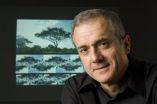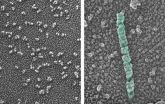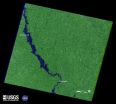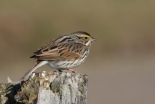(Press-News.org) DURHAM, N.C. – Esses are everywhere.
From economic trends, population growth, the spread of cancer, or the adoption of new technology, certain patterns inevitably seem to emerge. A new technology, for example, begins with slow acceptance, followed by explosive growth, only to level off before "hitting the wall."
When plotted on graph, this pattern of growth takes the shape of an "S."
While this S-curve has long been recognized by economists and scientists, a Duke University professor believes that a theory he developed explains the reason for the prevalence of this particular pattern, and thus provides a scientific basis for its appearance throughout nature and the man-made world.
"This phenomenon is so common that it has generated entire fields of research that seem unrelated – the spread of biological populations, chemical reactions, contaminants, languages, information and economic activity," said Adrian Bejan, engineering professor at Duke's Pratt School of Engineering. "We have shown that this pattern can be predicted entirely as a natural flow design."
The concept of flow design, whether it be energy, rivers or human populations, is central to Bejan's theory.
The results of this theory of the S-curve, conducted with collaborator Sylvie Lorente from the University Toulouse, France, were published online in the Journal of Applied Physics. The research was supported by the National Science Foundation, the U.S. Air Force Office of Scientific Research and the National Renewable Energy Laboratory.
Bejan's theory, known as the constructal law, is based on the principle that flow systems evolve their designs over time to facilitate flow access, reducing and distributing friction or other forms of resistance. Bejan developed the principle 15 years ago, and has been using it to describe and predict a wide variety of man-made and natural phenomena.
The current analysis views this ubiquitous S-curve (also known as the sigmoid function) as a natural design of flow systems. In the example of a new technology, after a slow initial acceptance, the rise can be imagined moving fast through established, though narrow, channels into the market place. This is the steep upslope of the "S."
As this technology matures, and its penetration slows, any growth, or flow, moves outward from the initial penetration channels in a shorter and slower manner. Bejan likes to the use metaphor of fingers stretching out to represent the initial invasive growth, with the placement of a glove over those fingers as a representation of the lateral consolidation phase.
"It's like there are two lives – the first is long and fast, while the second phase is short and slow," Bejan said. "The trend begins with a quick 'invasion,' followed by a 'slower' consolidation. Then the trend hits a wall."
This pattern matches that of the constructal theory, which uses a large river basin as a visual description of flow systems, growing fast and far, with smaller branches growing laterally from the main channels.
"The prevalence of the S-curve phenomena in nature rivals that of the tree-shaped flows, which also unite the animate, inanimate and human realms," Bejan said. "This theory shows that this is not a coincidence – both are manifestations of the natural constructal tendency of flow systems to generate evolving designs that allow them to flow, spread and collect more easily."
INFORMATION:
Seeing the S-curve in everything
2011-07-22
ELSE PRESS RELEASES FROM THIS DATE:
After the revolution: Groups vie for minds, votes of Egyptians
2011-07-22
Los Angeles, (July 2011) — Despite helping to push Hosni Mubarak and his regime from power, Egypt's liberals and pro-democracy activists are having trouble moving from revolution to politics, according to a recent article in the World Policy Journal (published by SAGE).
In this in-depth look at the Egyptian political landscape, the article's author, Jenna Krasjeki, examines various groups vying for influence and public support in the run-up to elections this fall. One common characteristic that Krasjeski notes is the lack of organization in the groups of young, liberal ...
Evolution provides clue to blood clotting
2011-07-22
A simple cut to the skin unleashes a complex cascade of chemistry to stem the flow of blood. Now, scientists at Washington University School of Medicine in St. Louis have used evolutionary clues to reveal how a key clotting protein assembles. The finding sheds new light on common bleeding disorders.
The long tube-shaped protein with a vital role in blood clotting is called von Willebrand Factor (VWF). Made in cells that form the inner lining of blood vessels, VWF circulates in the blood seeking out sites of injury. When it finds them, its helical tube unfurls to catch ...
Landsat satellites track continued Missouri River flooding
2011-07-22
Flooding along the Missouri River continues as shown in recent Landsat satellite images of the Nebraska and Iowa border. Heavy rains and snowmelt have caused the river to remain above flood stage for an extended period.
A Landsat 5 image of the area from May 5, 2011 shows normal flow. In contrast, a Landsat 7 image from July 17 depicts flood conditions in the same location.
A national overview map of streamflow provided by U.S. Geological Survey (USGS) WaterWatch graphically portrays the immense geographic extent of flooding in the Missouri River basin.
Monitoring ...
A new breed: Highly productive chickens help raise Ugandans from poverty
2011-07-22
In the fight to improve global health, alleviate hunger, raise living standards and empower women in the developing world, chickens have an important role to play.
Jagdev Sharma, a researcher at the Center for Infectious Diseases and Vaccinology at Arizona State University's Biodesign Institute has been investigating the advantages of a more productive species of chicken for villagers in rural Uganda. He reports his findings this week at the American Veterinary Medical Association Meeting in Saint Louis, Missouri.
The star of this developing story is a type of chicken ...
Fermilab experiment discovers a heavy relative of the neutron
2011-07-22
Scientists of the CDF collaboration at the Department of Energy's Fermi National Accelerator Laboratory announced the observation of a new particle, the neutral Xi-sub-b. This particle contains three quarks: a strange quark, an up quark and a bottom quark (s-u-b). While its existence was predicted by the Standard Model, the observation of the neutral Xi-sub-b is significant because it strengthens our understanding of how quarks form matter. Fermilab physicist Pat Lukens, a member of the CDF collaboration, presented the discovery at Fermilab on Wednesday, July 20.
The ...
GOES satellite sees a triple header in the tropics
2011-07-22
The GOES-13 satellite captured a triple-header in the tropics today when it captured three tropical cyclones in one image in the Northern Hemisphere.
A visible image taken from the GOES-13 satellite on July 20 at 14:45 UTC (10:45 a.m. EDT) and shows a consolidating low pressure area called System 99L in the eastern North Atlantic Ocean, Tropical Storm Bret several hundred miles east of South Carolina, and a large Hurricane Dora off the west coast of Mexico. The image was created by the NASA/NOAA GOES Project at NASA's Goddard Space Flight Center in Greenbelt, Md.
System ...
It's no sweat for salt marsh sparrows to beat the heat if they have a larger bill
2011-07-22
Birds use their bills largely to forage and eat, and these behaviors strongly influence the shape and size of a bird's bill. But the bill can play an important role in regulating the bird's body temperature by acting as a radiator for excess heat. A team of scientists have found that because of this, high summer temperatures have been a strong influence in determining bill size in some birds, particularly species of sparrows that favor salt marshes. The team's findings are published in the scientific journal Ecography, July 20.
Scientists at the Smithsonian Migratory ...
Unlisted ingredients in teas and herbal brews revealed in DNA tests by high school students
2011-07-22
Take a second look at your iced or steaming tea. Guided by scientific experts, three New York City high school students using tabletop DNA technologies found several herbal brews and a few brands of tea contain ingredients unlisted on the manufacturers' package.
The teen sleuths also demonstrated new-to-science genetic variation between broad-leaf teas from exported from India versus small-leaf teas exported from China.
Guided by DNA "barcoding" experts at The Rockefeller University, an ethno-botanist at Tufts University and a molecular botany expert at The New York ...
UCSF study highlights success of brain surgery for severe epilepsy
2011-07-22
Two-thirds of people with severe and otherwise untreatable epilepsy were completely cured of their frequent seizures after undergoing neurosurgery at the University of California, San Francisco Medical Center, according to a new study that examined 143 of these patients two years after their operations.
The new study not only shows the promise of this type of neurosurgery at treating severe epilepsy, it also highlights how research into brain imaging may help to further improve results for people who have such operations.
"Surgery can be a powerful way to stop this ...
Whole sequence variation map reveals insight into evolutionary studies of rhesus macaque
2011-07-22
July 20, 2011 – BGI (previously known as the Beijing Genomics Institute), the largest genomics organization in the world, and Kunming Institute of Zoology, Chinese Academy of Sciences, together published the whole sequence variation map of rhesus macaque (Macaca mulatta) in Genome Biology on July 6th, 2011 (http://genomebiology.com/2011/12/7/R63). The study provides available resources for evolutionary and biomedical research.
Rhesus macaque, also called the Rhesus monkey, is one of the best known species of old world monkeys. Human and Rhesus macaque share a most recent ...







